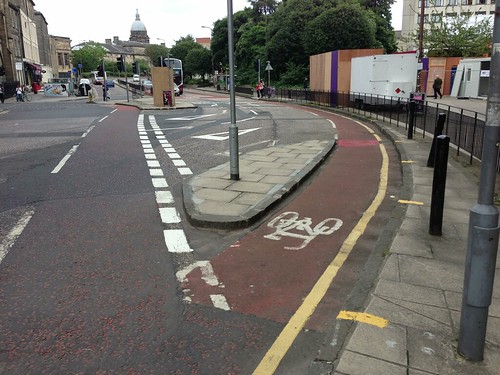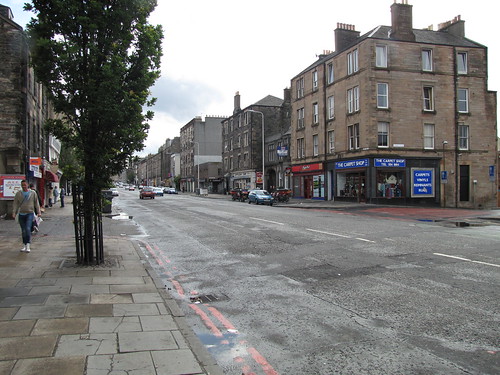"Not politically achievable"
That remains to be seen.
A lot has changed politically in the last year.
"
Lesley Hinds (@LAHinds)
22/07/2013 20:20
@kim_harding agree and cycling, pedestrians and bus users need to be given a higher priority than in the past. Agree?
"
Clearly that is not a commitment to "change to a fully segregated solution".
I not sure that anything equivalent to LW in Denmark or Netherlands with side streets and junctions would be described as "fully segregated". That term is more realistically applied to main roads with completely separate cycle routes - not just painted lanes.
The official who said "This not just a cycling project" is completely correct, something 'we' need to be well aware of. Lesley Hinds' words "and cycling, pedestrians and bus users need to be given a higher priority than in the past" are very important 'politically'.
What is now crucial is too make sure that there are translated into a decent scheme. Of course it could be argued that "given a higher priority" has already happened - it certainly has - and that 'no more is possible' within the current 'political realities' and likely funding.
I'm sure no-one is arguing for a completely segregated, elevated, cycle route the length of Leith Walk. Physically possible, totally iconic!, unlikely to be attractive visually and not 'value for money.
Leith Walk could be so much better than the current (ever developing) designs.
CEC is planning its "Family Network" (some discussion here). LW is not planned as part of this - perhaps it should be.
Perhaps the designs (for Leith Walk) should be guided by the (slightly nebulous) PoP idea of suitable for "8 to 80". Nice slogan, the actual numbers are irrelevant, clearly covers the adults who - at present - would not be willing to contemplate cycling on Leith Walk.
It's important not to think of 'using LW as part of a 5 mile commute'. Most people are VERY far from thinking they could possibly do that.
The cycle infrastructure needs to be designed such that people living in one of the side streets could easily and safely cycle a few blocks to the shops, cafes etc. (and return!) Such infrastructure would obviously join up and make a very good quality through route useful to those with various cycling skills levels.
This would produce something that the City could be proud of, Leith could be proud of, would be attractive to locals and visitors and passers through and inspire similar quality throughout Edinburgh and elsewhere.
It's not 'difficult' - plenty of examples to learn from elsewhere (Jim Orr has even had an official trip to look at some of them).
At present the plans for the Pilrig Street junction don't fit with the "8 to 80" concept. The proposal to use red chips (rather than red surfacing) - like QBC - is an unacceptable compromise. The lack of firm proposals (integrated with this whole scheme) for 20mph is symptomatic of lack of proper joined-up-thinking.
Details like this and the basic underlying principles of improving things for people - even car drivers - rather than vehicles is what should be going on.
Details of precise length and width of segregated bits should be less important than the various 'bigger pictures'.
What should be clear is that however brilliant the final design, how few the compromises are, how brave the officials and politicians are when it comes to reducing parking, how well it's all implemented, it won't be perfect.
There is a real danger that the final version will be set in tarmac and stone for years - complete with mistakes and, perhaps, real 'failures'.
I just hope that there is a real possibility for some bits of new layout to be experimented with rather than built in permanently when the road is, finally, resurfaced.
The pictures cc has posted of Munich do show what bits of LW could look like. I doubt if those bits are used for 'high speed commuting' and they also show something familiar from many of the continental 'cycling cities' - it's fairly flat.
That's something that Leith Walk certainly isn't. It's why segregated provision is very important uphill. Downhill most existing cyclists will be happy on road IF the surface is decent cycle (only) lanes are clearly marked, the chances of 'left hooks' at junctions are designed out.
For less confident cyclists or those on local journeys perhaps a nice wide, shared use, pavement would do.
Though maybe that would be one compromise too far for Edinburgh.
It would be good if more groups and individuals with interests other than 'cycling' where coming up with ideas too.






 posts
posts
